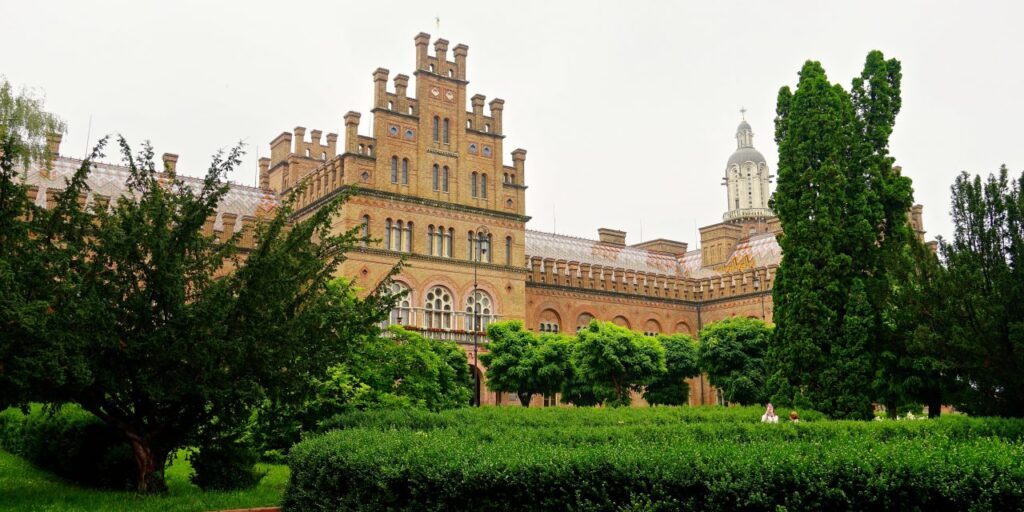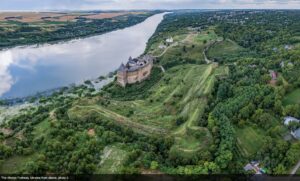Chernivtsi Region consists of the northern part of the regions of Bukovina and Bessarabia with an international border adjacent to both Romania and Moldova covering three geographic zones: a forest steppe region between Prut and Dniester rivers, a foothill region between the Carpathian Mountains and Prut river, and a mountain region known as the Bukovinian part of the Carpathian Mountains.
An Oblast was was created from the Chernivtsi Region in 1940 in the wake of the Soviet occupation of Bessarabia and Northern Bukovina. Subsequently several tens of thousands of Bukovinians were deported to Siberia and Kazakhstan, This and later deportations were primarily based on social class difference, targeting intellectuals, people employed previously by the state, businessmen, clergymen, students, and railworkers. The majority of those targeted were ethnic Romanians, but there were many representatives of other ethnicities, as well. During World War II, when the Chernivtsi Region returned to the control of the Romanian administration, the Jewish community of the area was largely decimated by deportations to ghettos and Nazi concentration camps, where about 60% died.
When the Soviet Union collapsed, Chernivtsi Oblast, then part of the Ukrainian SSR, became part of the newly independent Ukraine in 1991.
Since the start of the invasion, the city has been a host for refugees from the fighting in Eastern and Central Ukraine and a resting point for refugees on their way to nearby Romania.

Chernivtsi University. Chernivtsi National University (full name Yuriy Fedkovych Chernivtsi National University), was founded in 1875 as the Franz-Josephs-Universität Czernowitz when Chernivtsi (Czernowitz) was the capital of the Duchy of Bukovina, then a crown land of Austria-Hungary. Today the university is based at the 19th Century Residence of Bukovinian and Dalmatian Metropolitans building complex, a UNESCO World Heritage Site since 2011.
 Khotyn, first chronicled in 1001, is located on cliffs above of the Dniester River, and is part of the historical region of Bessarabia. One of the important architectural landmarks within the city is the Khotyn Fortress, constructed between the 13-15th centuries by the Moldavian monarchy. Since the Moldavian state’s international significance was dwarfed by that of the Kingdom of Poland and that of the Ottoman Empire, the latter sought to gain control of the strategic river crossing. As a result, Khotyn’s later history was dominated by periodic conflicts between the expanding Christian powers (first Poland, then Russia) and the growing influence of the Ottomans. In the 17th Century however, the Turks suffered two decisive defeats at Khotyn, both at the hands of the army of the Polish-Lithuanian Commonwealth: in 1621 by Hetman Jan Karol Chodkiewicz, and again in 1673 by Jan III Sobieski.
Khotyn, first chronicled in 1001, is located on cliffs above of the Dniester River, and is part of the historical region of Bessarabia. One of the important architectural landmarks within the city is the Khotyn Fortress, constructed between the 13-15th centuries by the Moldavian monarchy. Since the Moldavian state’s international significance was dwarfed by that of the Kingdom of Poland and that of the Ottoman Empire, the latter sought to gain control of the strategic river crossing. As a result, Khotyn’s later history was dominated by periodic conflicts between the expanding Christian powers (first Poland, then Russia) and the growing influence of the Ottomans. In the 17th Century however, the Turks suffered two decisive defeats at Khotyn, both at the hands of the army of the Polish-Lithuanian Commonwealth: in 1621 by Hetman Jan Karol Chodkiewicz, and again in 1673 by Jan III Sobieski.
The Ottoman Empire finally seized Khotyn Fortress from Moldavia in 1713 during the Great Northern War and held it during the following century as a base for its troops until it was captured by the Imperial Russian Army in the early 19th Century. With the signing of the Bucharest Peace Treaty in 1812, the entire region became known as Bessarabia and was annexed from Moldavia by the Russian Empire. This lasted another century until the collapse of the Russian Empire at the end of World War I when Bessarabia passed into Romanian control which lasted through the interregnum period until the outset of WW II when the USSR seized control.
With the collapse of the Soviet Union and the Declaration of Independence in 1991, Khotyn then became a part of newly independent Ukraine. In September 2002, the city celebrated its 1,000 Year Anniversary.
There are also many legends about Khotyn Fortress, concocted over the hundreds of years of its existence. Some popular narratives involve the origins of the large dark spot on the side of the wall of the fortress. One казка says that the spot was created by the tears of the Khotyn rebels that were killed inside the fortress while fighting against the Ottoman Turks. Another tale has it that the spot was created from the tears of a girl named Oksana, whom the Turks buried alive in the walls of the fort.
In July, 2007 Khotyn Fortress was selected as one of the Seven Wonders of Ukraine.
If you’ve got any questions, please do not hesitate to call, text or email us. We’re here to help you.
+380 (50) 242 75 54
dborysenko@gmail.com
ancestry@ukrainian-ancestry.com